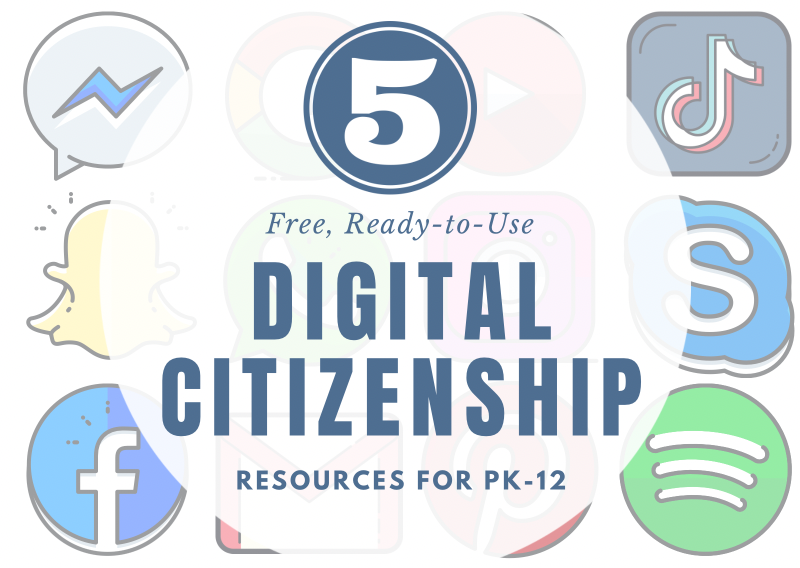Teaching Digital Citizenship isn’t just for Dig Cit Week so I’ve got a few resources to share with you! Whew. digital citizenship. It’s a biggie. Let me say that I have felt the weight of teaching digital citizenship. I’ve also had many discussions on this topic with teachers, administrators, and parents. A lot of us feel lost with where to start, what exactly to teach, and how to keep up with it all. It can feel daunting, but it doesn’t have to be!
How do we stay ahead of the game?
Let’s be honest, many students are light years ahead of adults when it comes to technology. As a result of their digital culture, they can seamlessly move between apps, programs, devices, operating systems, gaming systems, and more. They can do this easily and with relatively no learning curve. Many of them are fearless when it comes to exploring the world wide web and all the information, tools, and interaction it offers. In fact, some of them are creating the very tools we are using.
There is a Google answer for every question and a Google solution to every problem. For example, a former fourth-grade student wanted to play Fortnite, which was blocked by the school during class. He Googled: “How to get on Fortnite at school when it’s blocked.” Then he searched, “How to not get caught playing Fortnite by your teacher.” He learned how to create a decoy screen and enjoyed playing Fortnite during class, for a time. Then, a bit clumsily, he got caught. Pretty ingenious and resourceful, but also, what?? A fourth-grader?!
A more serious story is that of a fifth-grade girl. She set up a Facebook account using a fake birthday. Not knowing how to manage the privacy settings, she posted her cell phone number and location information for the world to see. This clearly opened her up to all kinds of risks. Very scary situation! I have many other stories, entailing everything from plagiarism to cyberbullying to misusing digital resources. But for each of these stories, I have others highlighting creativity, collaboration, kindness, ingenuity, and learning. How do we compete with Google, social media, and other technology to stay ahead of the game? How do we ensure that students are using technology appropriately and staying safe at all times?
What can we do?
Just like with any tool, we can’t ensure it’s being used appropriately all the time. And just like any situation or environment, we can’t ensure safety at all times. But what we can do is focus on teaching students the skills necessary for using digital tools appropriately and safely. This means focusing on digital citizenship as a preventative measure, starting with our youngest learners. We must talk openly about every aspect of digital citizenship, on a developmentally appropriate level, and we must talk about it often. But we can’t just talk. We also have to practice it, giving students guided opportunities and then offering independence.
Here is an excellent, research-based article, Digital Citizenship Starts with the Person Not the Tool! from ISTE’s blog. I can’t agree more. The author discusses prevention science in relationship to digital citizenship. While the article admits that more research and program integration need to be done, it provides several thought-provoking guiding questions for digital citizenship programs.
What exactly is digital citizenship?
According to edvolve’s Digital Citizenship Curricular Framework PK-12 by the Dig Cit Doctors Kristen Mattson and LeeAnn Lindsey, there are four important strands: Digital Safety, Media and Information Literacy, Digital Well-Being, and Social Responsibility. Take a look at how these are defined:
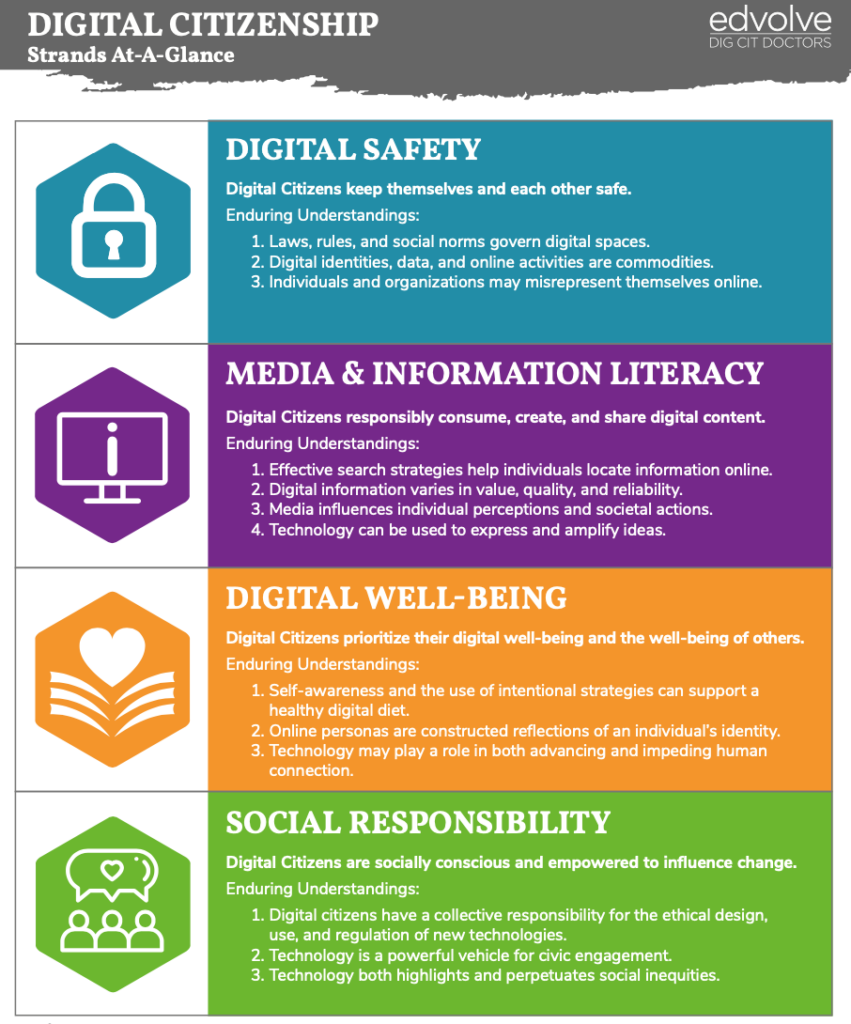
Depending on the program, curriculum, or framework you use, digital citizenship might be defined differently. However, it usually revolves around some mixture of safety, responsibility, digital literacy, and well-being. Let’s take a look at a few available resources that you might find helpful when addressing concepts surrounding digital citizenship with your students.
1. Digital Citizenship Curricular Framework PK-12
This 30+ page, downloadable PDF, reviewed by our own Executive Director Lori Gracey, offers a free and simple approach to teaching digital citizenship. It is also aligned with several standards, including Common Core State Standards, CASEL (social-emotional learning), and ISTE (technology). As pictured above, the framework breaks digital citizenship into four strands. Each strand is associated with enduring understandings, overall indicators of success, grade level indicators, and sample guiding questions per grade level. There are also technology skills related to each strand and a list of aligned content standards.
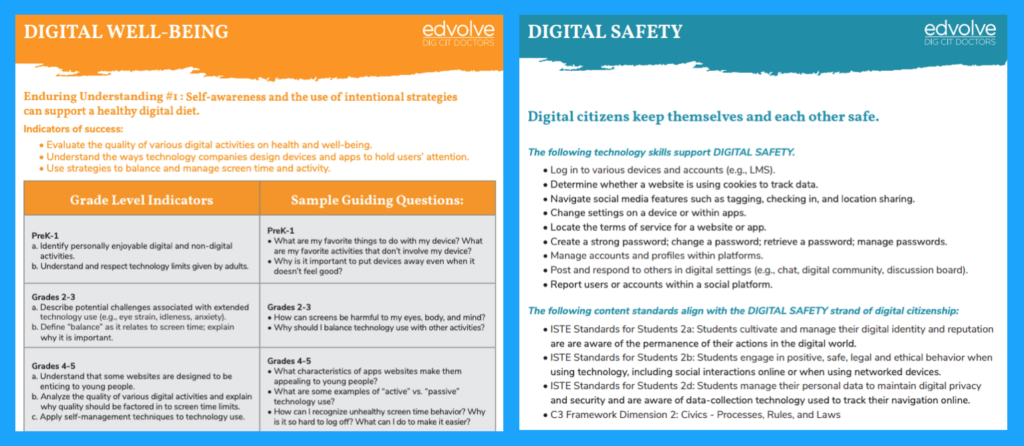
2. Typing Club
TypingClub’s Digital Citizenship curriculum for K–5 is a flexible, easy-to-implement program that covers online safety, privacy, cyberbullying, and responsible tech use. It includes detailed week-by-week teacher guides with vocabulary, standards alignment, and extension ideas for deeper learning. The resources are also available in Spanish, making them accessible to a wider range of learners.
One standout feature? The collection of ready-to-use templates that can support a variety of lessons or plug right into the weekly guides. You’ll find:
- Certificate of Completion
- BINGO Template
- Compare and Contrast Template
- Define or Draw Template
- Two Timeline Templates
- Venn Diagram
- Vocabulary Graphic Organizer
Whether you’re kicking off a unit or wrapping one up, these tools help students engage and reflect in meaningful ways.
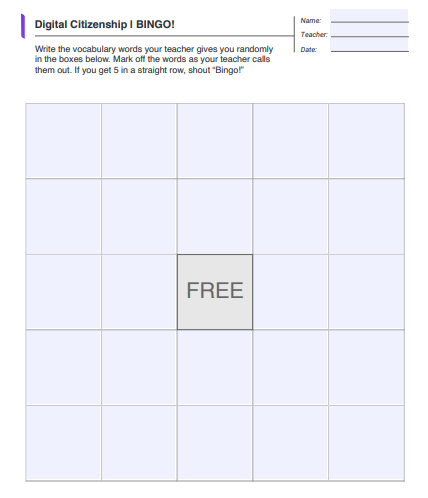
3. Common Sense Education
Common Sense Education has some great resources for Digital Citizenship Week. There are daily activities, resources for promoting digital citizenship in the community, and training and learning events.
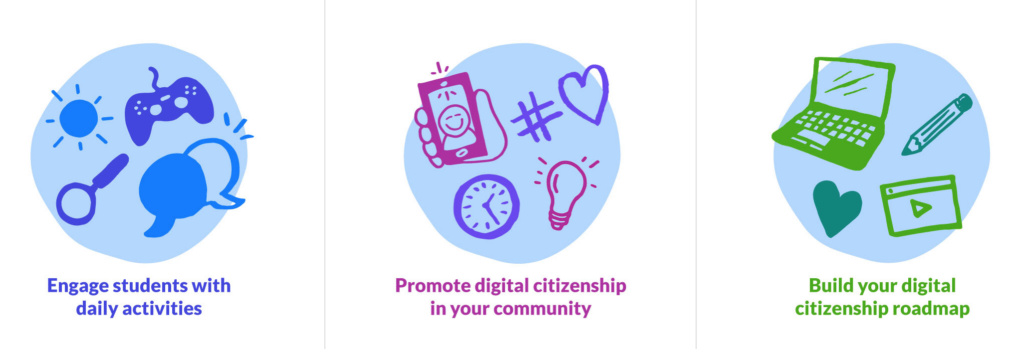
They also have a free K-12 curriculum broken up by grade level. Each grade level contains lesson plans with objectives, vocabulary, a list of what you’ll need, resources (videos, songs, etc.), and take-home resources. Lessons focus on the following topics:

In addition, you can download the lesson plans as PDFs. Don’t have time for a full lesson? No problem. They provide you with a condensed version! Check out their digital citizenship week activities for elementary, middle, and high school students for an activity each day.
4. The Social Institute
I love this article from The Social Institute’s blog about their seven social standards. These standards are fantastic, relevant, and excellent for students in grades 4-12. If you create a free login, they also have a downloadable School Playbook: Social Media’s Role in Social-Emotional Health. This handout proposes five steps to support students in using social media and provides some informative statistics. It also promotes their #WinAtSocial social-emotional learning (SEL) curriculum, which incorporates social media, SEL, and digital citizenship. This is a relatively new web-based and gamified curriculum aligned with CASEL standards. To find out the cost, you have to contact them through the website. Here is a snapshot of their program at-a-glance:
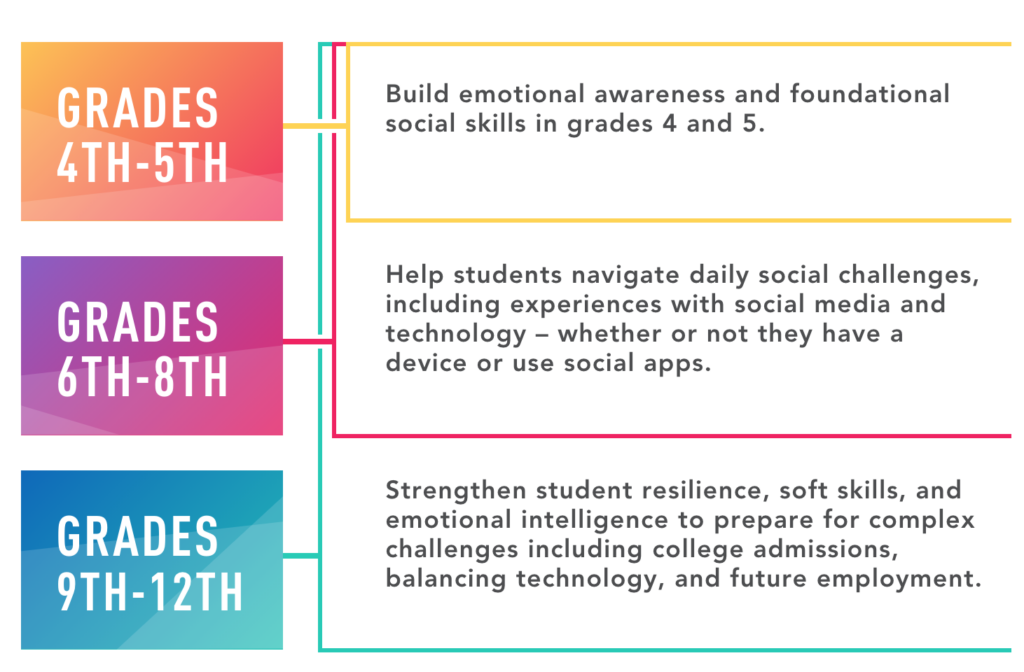
I would also recommend checking out their blog for many articles about social media, their Student Influencer Program, social-emotional learning, and more.
5. Nearpod Free Lessons
Nearpod has recently published a blog post with some great daily activities for Digital Citizenship Week. The activities are linked directly into the post for you to add individually, or you can download the weekly plans. These include activities for grades K-12 on everything from the history of the internet to trustworthy sources to cyberbullying. If you use these lessons in your classroom, Nearpod asks for Tweets of pictures using the hashtag #DigCitwithNearpod.
They’ve also included some really great free, downloadable posters. In addition, Nearpod does have a full Digital Citizenship and Literacy curriculum, and you can contact a representative for a quote.
Additional Resources
- A Digital Citizenship Framework and Lessons is a TechNotes blog post by Lori Gracey providing several resources for digital citizenship lessons.
- Google provides a Digital Citizenship and Safety Course for teachers and students. The course has five units, each with an introduction, lesson, and review, lasting a total of 23 minutes each. Topics covered include privacy, phishing and scams, online safety, searching, and online reputation.
- Google has some resources on their Be Internet Awesome site. They also list a few partners that are worth checking out. For example, PearDeck has created Be Internet Awesome interactive presentations to coordinate with Google’s lessons.
- SeeSaw has more than 1,500 activities under the Digital Citizenship category in its Activity Library.
- In addition to the suggested activities in Common Sense Education’s daily activities, Book Creator offers lessons and student activity books.

